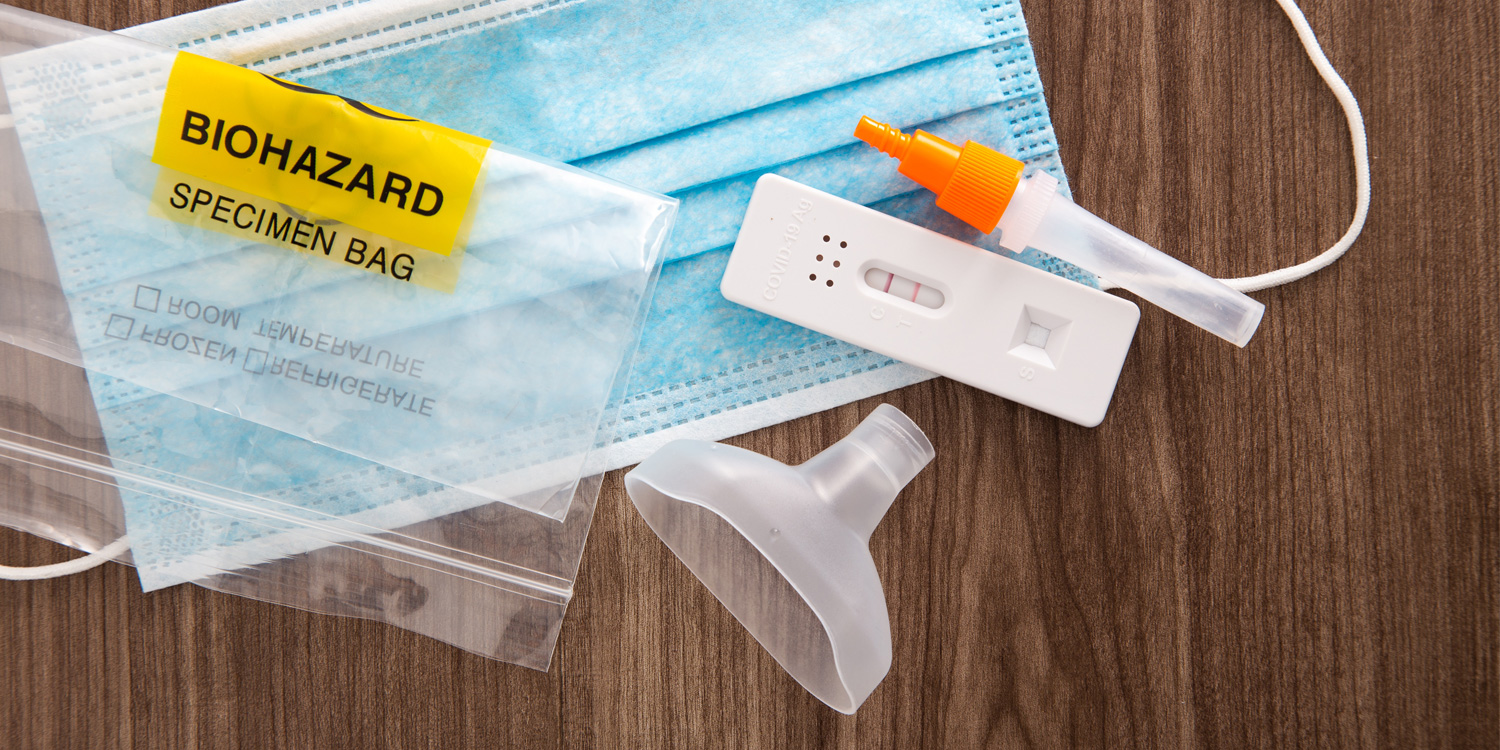Which Is Best for You: At-Home or In-Clinic STD Testing?
Why Early Detection Matters More Than You Think
STDs are the great impersonators. Many don’t cause symptoms until they’ve already triggered serious health problems. Chlamydia and Gonorrhea can lead to infertility. HIV can sit quietly for years while damaging your immune system. Syphilis can move into your brain. This isn’t fearmongering, it’s biology.
But here’s the good news: caught early, most STDs are curable or manageable. And you don’t need to wait for a crisis to test. With at-home STD kits, you can screen before your body tells you something’s wrong, and that might just save your fertility, your health, or your life.
The days of “wait and see” are over. Proactive testing is modern sexual self-care, and it’s never been more accessible.

People are also looking for: Can STDs go undetected for years?
What STDs Can At-Home Kits Detect?
Today’s home STD kits don’t skimp. They can detect a wide range of infections, some of which are deadly if left untreated. While each brand offers different panels, most tests cover:
- Chlamydia
- Gonorrhea
- HIV (1 & 2)
- Syphilis
- Trichomoniasis
- Hepatitis B & C
- Herpes (HSV-1 & HSV-2)
- HPV (in some cervical test kits)
Many providers also offer combo panels, like the Complete STD Home Test Kit Package, which screens for 8+ infections at once. Think of it like a wellness check for your sex life.
How At-Home STD Tests Actually Work
They may feel like magic, but the science is solid. Here’s what typically happens when you order an at-home STD test:
- Choose your kit: Pick a panel based on your needs or recent risks.
- Collect your sample: Most tests use urine, finger prick blood, or a vaginal swab, depending on the infection.
- Send it back: Use the prepaid envelope to mail it to a CLIA-certified lab.
- Get results: Within 2–5 business days, your results are posted securely online.
Some kits also include telehealth consults and treatment options if you test positive. That’s care continuity, without setting foot in a clinic.
Check Your STD Status in Minutes
Test at Home with Remedium7-in-1 STD Test Kit

 For Men & Women
For Men & Women Results in Minutes
Results in Minutes No Lab Needed
No Lab Needed Private & Discreet
Private & DiscreetOrder Now $129.00 $343.00
For all 7 tests
Who Should Be Using These Tests?
Here’s the reality: if you’re sexually active, you need to test. Full stop. But some people are especially at risk and should consider regular at-home STD screening:
- People with new or multiple partners
- Those not consistently using protection
- Men who have sex with men (MSM)
- People living in rural areas without easy clinic access
- Anyone who avoids in-person care due to stigma, cost, or fear
The CDC recommends routine screening for many of these groups. At-home tests make that guidance actually doable for people living real, messy, busy lives.
The Real-Life Benefits of Testing from Home
For many, at-home STD testing isn’t just about convenience, it’s about survival. It eliminates the logistical, emotional, and social barriers that keep people from getting tested. And let’s be honest: the average clinic visit isn’t exactly warm and fuzzy.
Here’s what people gain when they switch to at-home testing:
- Privacy: No judgmental glances, no awkward paperwork, no nosy waiting rooms.
- Speed: Most kits deliver results in under a week, some in as little as 48 hours.
- Accessibility: Ideal for people in rural or underserved communities.
- Consistency: Easier to build a testing routine without life getting in the way.
Think of these kits as sexual wellness tools. Like birth control or a menstrual tracker, they’re here to help you stay safe and informed, on your own terms.
The Challenges: What Home STD Tests Can’t Do (Yet)
As amazing as they are, at-home tests aren’t perfect. They’re powerful tools, but not replacements for doctors, yet. Here are some important limitations to keep in mind:
- Window periods matter: Testing too soon after exposure can lead to false negatives, especially for HIV or Syphilis.
- No physical exam: A home test can’t check for warts, lesions, or visual symptoms that might point to HPV or Herpes.
- Limited insurance coverage: Many home tests aren’t reimbursed unless prescribed, which can make them cost-prohibitive for some.
But the industry is catching up. Many companies now offer medical support, easy follow-ups, and even prescriptions, all from the comfort of home. The key is choosing kits that don’t just give results, but help you interpret them too.

People are also looking for: Is a negative STD test ever incorrect?
What the Experts Are Saying
Dr. Kevin Wilcox, an infectious disease specialist, says:
“We’ve seen testing rates increase dramatically among people who never stepped foot in a clinic before. Home testing removes barriers. It saves lives.”
According to a 2022 study in the Journal of Sexual Health, individuals using home STD kits were more likely to test regularly and seek treatment earlier compared to clinic-only users.
When you pair convenience with education, people stop avoiding their health, and start engaging with it. That’s the real revolution.
The Rise of a New Testing Culture
We’re watching a shift happen in real time. Sexual health is becoming digital, discreet, and de-stigmatized. Millennials and Gen Z are leading the charge, not because they’re reckless, but because they want control and clarity without the moral baggage.
Telemedicine + at-home testing = a new model of care. And it’s not just the U.S., countries like the UK, Canada, and Australia are building national home-testing programs as part of their public health strategy.
For those who grew up hearing “STDs = shame,” this is liberation. For the next generation, it’ll just be healthcare.
How to Actually Use the Results
A negative result doesn’t mean invincibility. And a positive result doesn’t mean your sex life is over. What you do next matters most.
If your test is negative: Great. But keep testing regularly, especially after new partners or risk events.
If your test is positive: Breathe. Most STDs are treatable. Some are curable. Use the test provider’s telehealth follow-up, talk to a partner, and get treated. Then, go on living your life.
Check Your STD Status in Minutes
Test at Home with Remedium7-in-1 STD Test Kit

 For Men & Women
For Men & Women Results in Minutes
Results in Minutes No Lab Needed
No Lab Needed Private & Discreet
Private & DiscreetOrder Now $129.00 $343.00
For all 7 tests
Stories from the Bedroom (and the Bathroom)
Danny, 34
“My new partner asked if I’d been tested. I panicked. I hadn’t since college. I ordered an at-home kit, peed in the vial, and mailed it from the drugstore parking lot. A week later, I was negative across the board, and finally felt ready to show up sexually and emotionally.”
Jules, 28:
“I tested positive for Chlamydia using a home test. I cried, but then scheduled treatment through their app. No judgment. No long wait. Just care. Honestly, it made me take myself more seriously.”
Real people. Real fears. Real empowerment. This isn’t about perfection. It’s about permission to care for yourself without shame.
Common Myths That Keep People From Testing
“If I had an STD, I’d know.” Nope. Most STDs are asymptomatic, especially in the early stages. Waiting for symptoms is like waiting for smoke before checking for a fire.
“I’m in a monogamous relationship, so I’m safe.” Maybe. But unless both partners tested before getting exclusive, there could be an undetected infection from the past.
“Home tests aren’t real tests.” They are. Reputable home kits use the same labs and standards as in-clinic testing, just with a different delivery method.
“Getting tested means I don’t trust my partner.” No. It means you respect yourself and your relationship enough to bring facts into the bedroom.
FAQ
1. Can I test for STDs even if I have no symptoms?
Yes. Many people test regularly to screen for asymptomatic infections, which are extremely common.
2. How long should I wait after sex to test?
It depends on the STD. For most, wait 1–3 weeks. For HIV, Syphilis, and Hepatitis, 4–6 weeks ensures better accuracy.
3. Are home STD tests as accurate as clinic tests?
If the test is FDA-cleared and lab-analyzed, yes. They use the same testing methods as many clinics.
4. What kinds of samples do I need to give?
Most tests require urine, a finger prick of blood, or a vaginal swab, depending on what you’re screening for.
5. Will the test show which STD I have?
Yes. Most panels give individual results for each infection tested, not just a pass/fail result.
6. Are the kits discreet?
Yes. Packaging is plain, and results are delivered via secure online dashboards, no awkward mailroom moments.
7. Can I get treatment if I test positive?
Most providers offer telehealth consultations and treatment referrals. Some even send prescriptions to your pharmacy.
8. What’s the difference between combo kits and single STD tests?
Combo kits screen for multiple STDs at once. Single tests target just one, useful if you have a specific concern.
9. Can I use these tests if I’m on PrEP?
Yes, and you should. People on PrEP are advised to test regularly for STDs other than HIV.
10. Are these kits gender inclusive?
Many are, yes. Some offer gender-specific swabs or urine containers. Look for inclusive language and support options.
Your Health Isn’t Optional
You don’t have to be perfect to care about your health. You don’t need symptoms, a reason, or permission. All you need is curiosity, and the willingness to know what’s going on inside your body. Testing for STDs at home isn’t about fear. It’s about freedom.
The next time you think “maybe I should get tested,” trust that instinct. Because early detection doesn’t just protect your health, it protects your future, your relationships, and your peace of mind. Don’t wait for symptoms. Don’t wait for permission. Order a reliable, discreet Complete STD Home Test Kit today and know your status from home. Fast results. Zero shame.
Sources
1. CDC: STD Facts and Testing Recommendations
2. NIH: Home-Based Testing for STIs: A Review
3. Journal of Medical Internet Research: Digital Access to STD Testing










